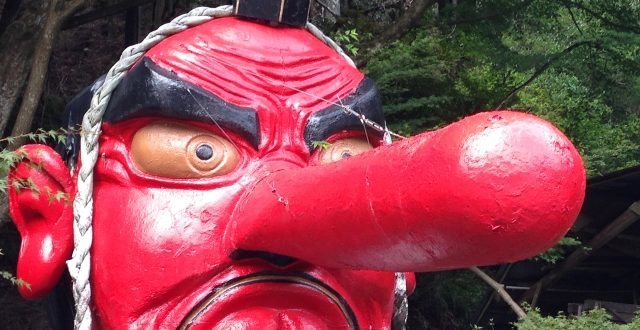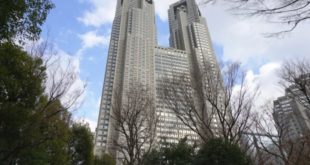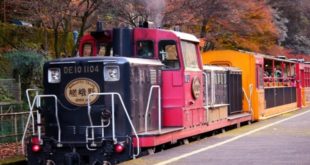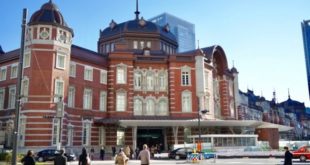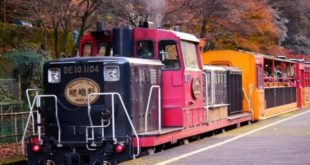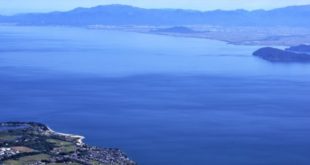Kurama, Kibune area is an attractive tourist city where there are many tourist spots with deep history and tradition, such as Mount Kurama, where MINAMOTO no Yoshitsune is said to have been trained in Tengu during his childhood.You can enjoy traditional riverbed dishes, the Himatsuri of Kurama, one of the Kyoto Sansai festivals, and so on, and it is a place where you can touch the history of Kyoto.
In this article, I will introduce you to the attractions of the Kurama and Kibuni areas and the recommended sightseeing spots.If you are considering sightseeing in the area of Kurama and Kibune, please refer to it.
Contents
Basic information on Kurama and Kibune area
The area of Kibune and Kurama is also called “Oku-dashiki” in Kyoto, and it is a spiritual spot surrounded by majestic nature and historic buildings.You can hike the area where autumn leaves are beautifully blooming, or you can enjoy the “Kawabed dishes” of Kibunko in summer.
You can enjoy famous sights such as “Kurama-dera Temple,” which is said to have been practiced by MINAMOTO no Yoshitsune, and “Kifune shrine,” which is famous as a god of water, so it is a popular tourist area where you can see the sights even if you do sightseeing all day.
Features
of each area of Kurama and Kibune
Kurama area is an area where you can enjoy the history of “Kurama-dera Temple” and “Yuki-jinja shrine”. It is a area where you can feel the flow of time among majestic nature.There are many refreshable refreshing points such as Kurama Onsen.
The Kibune area is an area along Kifune river, where you can enjoy the famous riverbed dishes at ryokans, and there are also many famous places like Kifune shrine.
2 popular areas are connected on the mountain road, so you can move on foot.Let’s move while enjoying hiking in beautiful nature.
Recommended season for sightseeing in Kurama and Kibune
You can enjoy sightseeing in the Kurama and Kibune areas in every season of spring and summer, autumn and winter.During summer hot seasons, you can enjoy leisurely walking and sightseeing in the middle of the spring, while enjoying the coolness of the riverbed dishes.In autumn, you can enjoy the autumn leaves, and in winter, you can enjoy the scenery of Kurama, Kibune, where you can change your expression in every season.
How to Access the Kurama / Kibune Area
The most commonly used means of accessing the Kurama and Kibune areas is the Eizan Railway.The Eizan Railway is operated by the “Demachiyanagi Station”, which is the terminal of Keihan Electric Railway, and you can access to Kurama Station, which is located in the center of Kurama area, or Kibuneguchi Station, which is located in the area of Kibune.
The travel interval is relatively frequent for 15 to 20 minutes, so it is a suitable train for sightseeing.
Local specialty of Kurama and Kibune, Kawabed Cuisine
Kawabed dishes have been traditional dishes since the Edo period, and you can enjoy dishes in a tatami room located on the river side of the river for the sake of the sake of the summer.Kibuni area is a famous cultural attraction for this riverbed dish, and Kawabed dishes are served in many ryokan in the Kibuni area.
Dishes such as sweetfish and conger pike, which are enjoyed in Kawabed, are tasteful, and they are definitely a dish to try when visiting Kyoto in summer.
Recommended souvenirs of Sofune and Kibune area
In the area of Kurama, there are many specialty goods in the area of Kurama and Kibune, and there are many famous goods for history and tradition, so you don’t have to worry about it as a souvenir.In Mount Kurama, Kurama Tengu has a dream of selling Tengu goods, and in close proximity to Kurama-dera Temple where MINAMOTO no Yoshitsune trained, “Gyuwakamochi” (cow cake) is sold.
Also, I recommend you the colorful amulet of Kifune shrine, which is popular among young men and women, as a place to make tableware made by craftsmen in the Kibune area, which is sold at the Kibune Gallery.For those who like food, “Leaf Bud simmered” which is a specialty of Kurama area is the most popular.
Festival “Kurama Fire Festival”
representative of Kurama, Kibune area
Kurama Fire Festival is a Yuki-jinja shrine located in the Kurama and Kibuni areas, and it is one of the Kyoto Sansai Festivals held on October 22 every year.There is a fire lit around the houses around Yuki-jinja shrine, and from the children who put fire on a torch to adults, they walk around the streets of the town.The adults have a large pine tree with a weight of about 100 kilograms, and they walk in a loud chorus while the Kurama drum is beating.
The hot heat of fire is terrible, and it will be a festival that cannot be forgotten once you visit.
Popular sightseeing spots in Kurama and Kibune area
Mount Kurama mountain climbing
Mount Kurama is the place where MINAMOTO no Yoshitsune, a child, trained, and it is also a place where Tengu trained Yoshitsune’s martial arts.In Kurama-dera Temple, the entire Mount Kurama is a precinct, and the principal image is a mysterious temple that is regarded as a power of space.When you visit the Kurama area, you can climb Mount Kurama from Kurama Station and go to Kurama-dera Temple, which is popular as a spiritual spot tourism where you can enjoy the power of mountains.
Kurama Station has a large Tengu object, which is powerful, and there is a Niomon gate near the station, where you can enter the mountain by paying a Aizan fee of 300 yen, which is regarded as a boundary between the scuba world and the community.The 環浄 water is flowing from the front of the gate of the mountain gate, so let’s go up the stone steps first after purifying the method.There is a lantern on the side of the good s corps, and you can enjoy the fantastic scenery lit by lanterns at the “Weissaku Festival” held on the full moon day in May.
It is safe to say that it is a little bit to climb the stone stairs.In Mount Kurama, there is a Mount Kurama cable car operated by Kurama-dera Temple, so you can visit even those who don’t have confidence in your legs and back.It is customary to donate 200 yen of gratitude fee to keep the hall.
In about 2 minutes, you reach Tahoto Station, and you can reach the main hall by climbing the 155 stage stone staircase which is loose from here.
Kurama-dera Temple
From Kurama-dera Temple, where you can climb Mount Kurama, you can enjoy the scenery of all beautiful Mt. Hiei scenery.After you finish climbing stone stairs, you can look at the scenery of a beautiful mountain for a while.In front of Main Golden Hall, there is a stone bed called “Kongo Bed” which is shaped like a 6 star star, and tourists are lined up.It is said that by standing at the center of this center, by spreading both hands by spreading both hands, you can reach a desire for space.Please try it when you visit Kurama-dera Temple.
If you climb a little further from Main Golden Hall, you can visit the “Spiritual Hoden”, which allows you to learn about the history and ecosystem of Mount Kurama, and the “Winter Kashiwa Tei” study in Noaki, Yoza.
In front of Kurama Terayama Gate, there is a tea room “Yongzhou Road” where you can enjoy soba and tea.After you have finished visiting Kurama-dera Temple, let’s take a breather here.
Summary
The Kurama and Kibune area is a town where you can feel a sense of history and nature.It is a city where you can refresh from daily life, and it is also a city recommended to visit for sightseeing.You can enjoy a fun experience that you can only enjoy here, such as a Himatsuri of Kurama, a visit to Kurama-dera Temple, etc.If you visit Kyoto, please enjoy Kyoto’s history and nature and culture in the Kurama and Kibuni area.
 toptrip
toptrip
